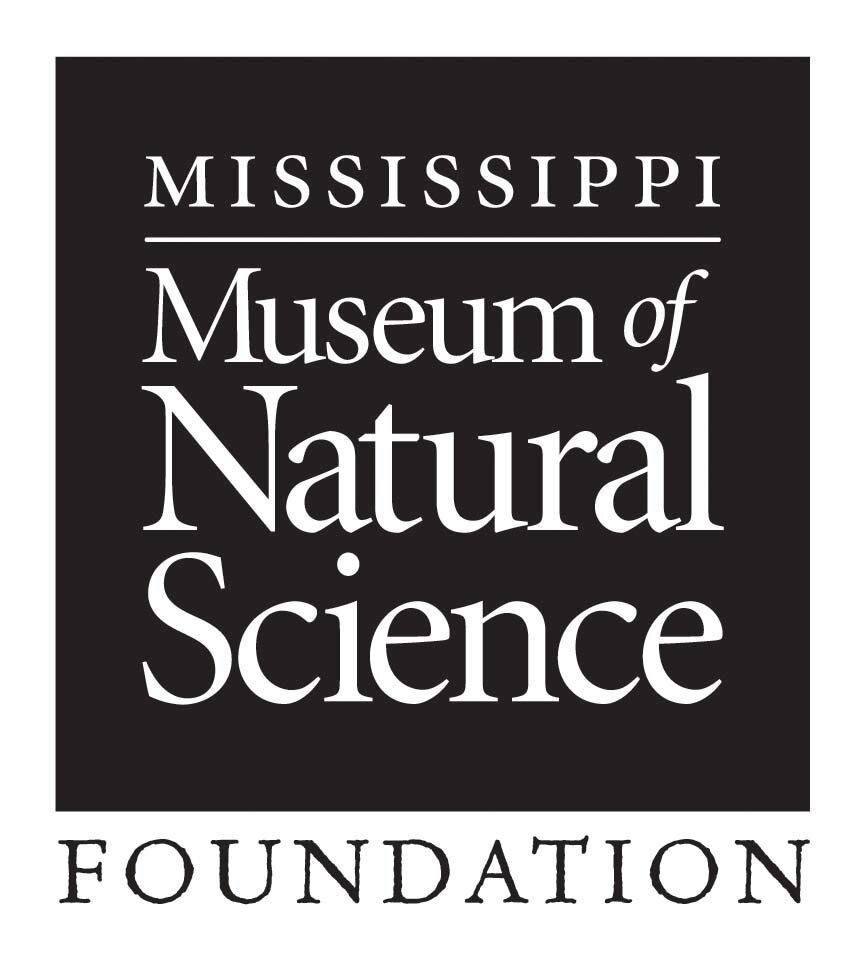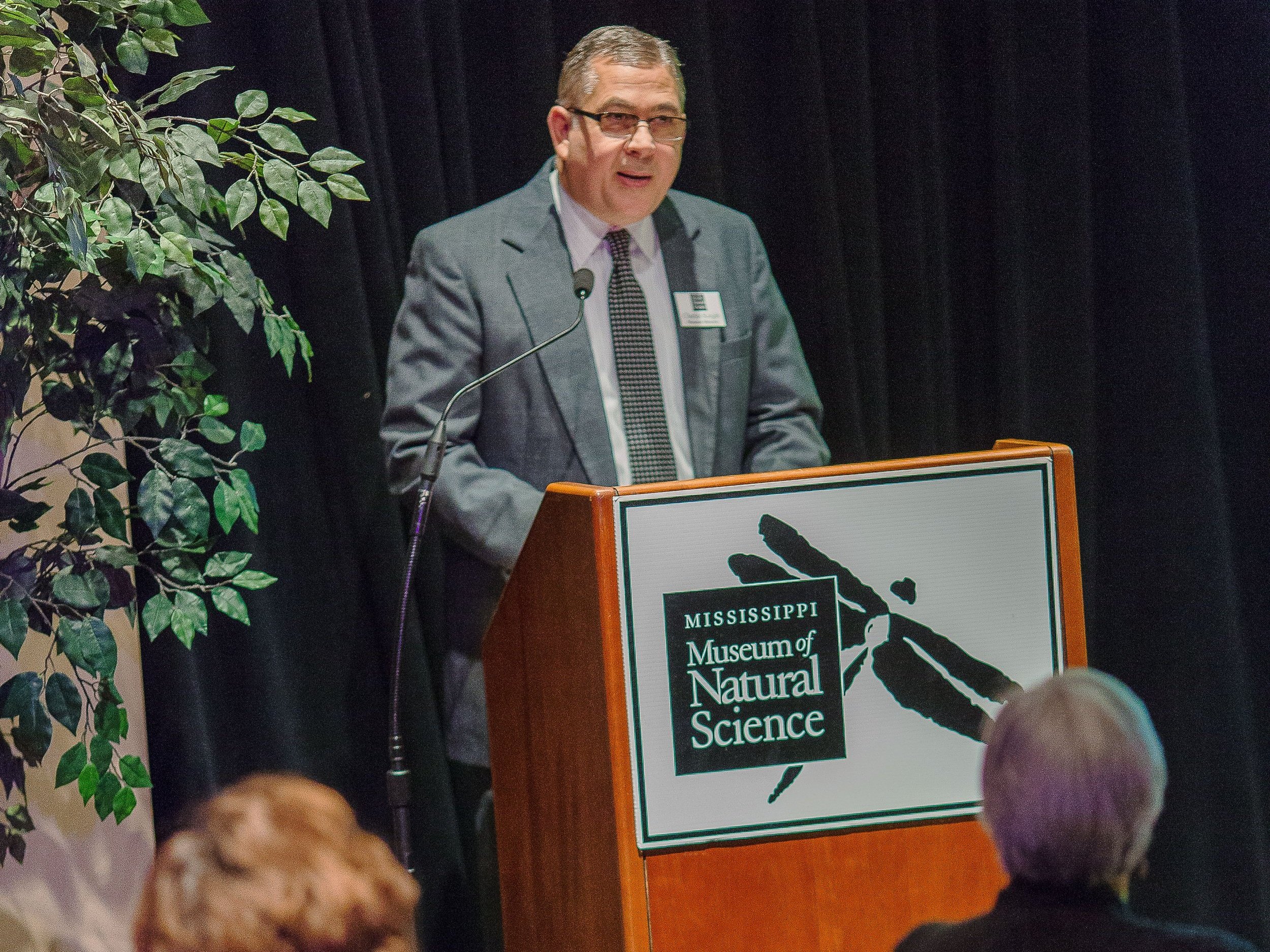Museum Director Charles Knight has worked at the Museum for 31 years! Charles has been instrumental in growing the Museum into a wonderful, award-winning attraction and research facility!
Get to know Charles better in this interview - and learn more about how he combines his education and passion for conservation and the outdoors to lead the Museum.
HOW LONG HAVE YOU WORKED FOR MDWFP’S MISSISSIPPI MUSEUM OF NATURAL SCIENCE?
I have worked for the Museum for 31 years.
WHAT’S YOUR WORKDAY LIKE?
My workday varies quite a bit.
I usually spend a part of most days responding to emails, and approving requests to purchase, travel, take leave, etc.
I often have at least one or two meetings with staff or others for planning purposes, to be informed, or make decisions about things that need to be done, or that we want to do at the Museum.
When I get a chance, I like to walk through the Museum to see how things are going and to visit with staff and Museum guests.
ANY FUNNY WORK STORIES?
I was originally hired at the Museum back in 1993 as the ichthyologist (fish biologist) but we did not have a mammalogist on staff at the time, so I handled issues related to mammals as well.
One day, I received a message to call a Mr. Carlyle about a bear sighting. There were few bears in the state back then so reports of bears were rare. The few bear reports we did get often turned out to be big dogs but occasionally really were bears.
I called Mr. Carlyle, who sounded like an older gentleman and had a very distinct voice. He described seeing what he was certain was a bear standing on its hind legs looking at him from across an open grassy area in Clinton, MS. I was surprised that a bear would be in town, but I knew that there were a few bears not too far west of Clinton, so I thought it was possible.
I wrote down the information, thanked him for his call, and waited to see if I would get calls from others that that might confirm his report. No one else reported anything, but Mr. Carlyle called back a couple of times to provide more details, and as he remembered more the bear began to sound less and less typical.
One day, he called and said that he remembered something else. He said that when the bear turned and walked into the woods, it walked fully upright just like a person and stood 8 or more feet tall. He also told me that when it looked at him, its face looked like a cross between a person and an ape.
I suddenly realized that, little by little, Mr. Carlyle he had led me on this journey that began as a report of a bear and was now a sighting of bigfoot or skunk ape in Clinton, MS. After several more calls from Mr. Carlyle trying to convince me, I finally had to tell him I could not help him and asked him to stop calling me about it.
About a week later, I was transferred a call from a person that wanted to report seeing a bear. When I picked up, I immediately recognized Mr. Carlyle’s voice as he began to explain that he had recently seen a bear in Clinton, MS.
I said, “Mr. Carlyle, it’s me, Charles Knight. I Just talked to you last week and have your report”. He replied: “My name is not Mr. Carlyle. I’m Mr. Jackson!” I said: “No. It’s me, Charles Knight, Mr. Carlyle”. And, he replied again with: “I don’t know Carlyle…I’m Jackson.”
He called a few weeks later as Mr. Carpenter to report a bear in Clinton, MS, and I discovered that he was also calling other biologists in the area to report seeing bears and large flocks of exotic colorful tropical birds.
The calls slowed down and then stopped about a month later and I never heard from Mr. Carlyle, or Jackson, or Carpenter again.
TELL US A BIT ABOUT YOUR BACKGROUND AND EDUCATION
I grew up in Jackson and later Oxford. For as long as I can remember, I was drawn to the outdoors, and I wandered the woods for hours at a time and hunted and fished a lot, too. Some of my fondest early memories are of fishing with my dad and brother.
I also often spent time out on the water watching my dad who was an aquatic biologist and university professor do his field work. After high school, I spent a year roaming Florida, working various odd jobs and then returned to Oxford.
I received a bachelor’s degree in biology from Ole Miss and a master’s degree in biology from Southeastern Louisiana University.
I later worked on a Ph.D. at the University of Arkansas but left before finishing to return to Mississippi to accept the Ichthyologist position with the Museum.
As a kid back in the 1970’s, I visited the Museum in its old location across from the Mississippi State Fairgrounds. It felt almost like it had been built just for me and I returned anytime that I could.
In graduate school, in addition to my studies of fish and aquatic ecology, I gained quite a bit of experience with scientific museum collections and worked as a graduate assistant at the University of Arkansas Museum where I learned museum methods, procedures, and effective exhibit development.
About 20 years after my first visit to the MS Museum of Natural Science, I jumped at the chance to work at the Museum!
WHY DID YOU CHOOSE THIS CAREER?
Growing up I always knew that I wanted to work with animals.
As I neared the end of high school, I also knew I wanted to see the world and I pursued a career in the travel & airline industry for a while. But my dad was an aquatic biologist, my brother is an aquatic biologist, and my mother taught 5th grade science, so it was apparently biology that was in my blood, and I turned back to it as I pursued my studies.
I considered botany and a couple of other disciplines, but working with aquatic animals appealed the most to me. I worked a week each summer as a counselor at an ecology camp for kids for many years and learned that I really enjoyed working with kids. And, when I had the chance to help develop and build museum exhibits while in graduate school, I was really drawn to the creative aspects of that.
All those things along with my passion for the outdoors and wildlife conservation made working at a natural science museum a perfect career.
HOW DOES YOUR JOB CONTRIBUTE TO CONSERVATION?
Our Museum contributes to conservation in many ways.
The museum is an attraction enjoyed by people of all ages. We are perfectly happy that many of our guests are only looking to spend a few hours enjoying an entertaining and interesting experience with friends, families, or others. And, even though having a good may be at the top of their list, I hope and believe that as our visitors are entertained and wowed by what they see and do, they take away a little more knowledge of and appreciation for the natural things and places of Mississippi.
We are an educational institution, and our educators are very good at helping students, teachers, and others understand our environment and native wildlife, why their conservation may be important, and what they can do to conserve them. We are also a research and conservation biology facility.
The Museum functions as the nongame conservation bureau of the MS Wildlife, Fisheries & Parks. Serving mostly behind the scenes of the Museum is a group of biologists dedicated to understanding and conserving native species with a focus on those species that people do not hunt and fish for.
I see my role as doing my best to lead and help our staff do their parts for conservation.
ANY ADVICE FOR A STUDENT INTERESTED IN A BIOLOGY OR MUSEUM CAREER?
There are many different types of biology and museum careers.
Seeking out volunteer opportunities, part-time, or summer jobs can give someone an opportunity to learn about different options.
Finding a mentor in an area of work that a person is interested in could also be very helpful.
College degrees are required for many careers, and some require a master’s or Ph.D. degree.





